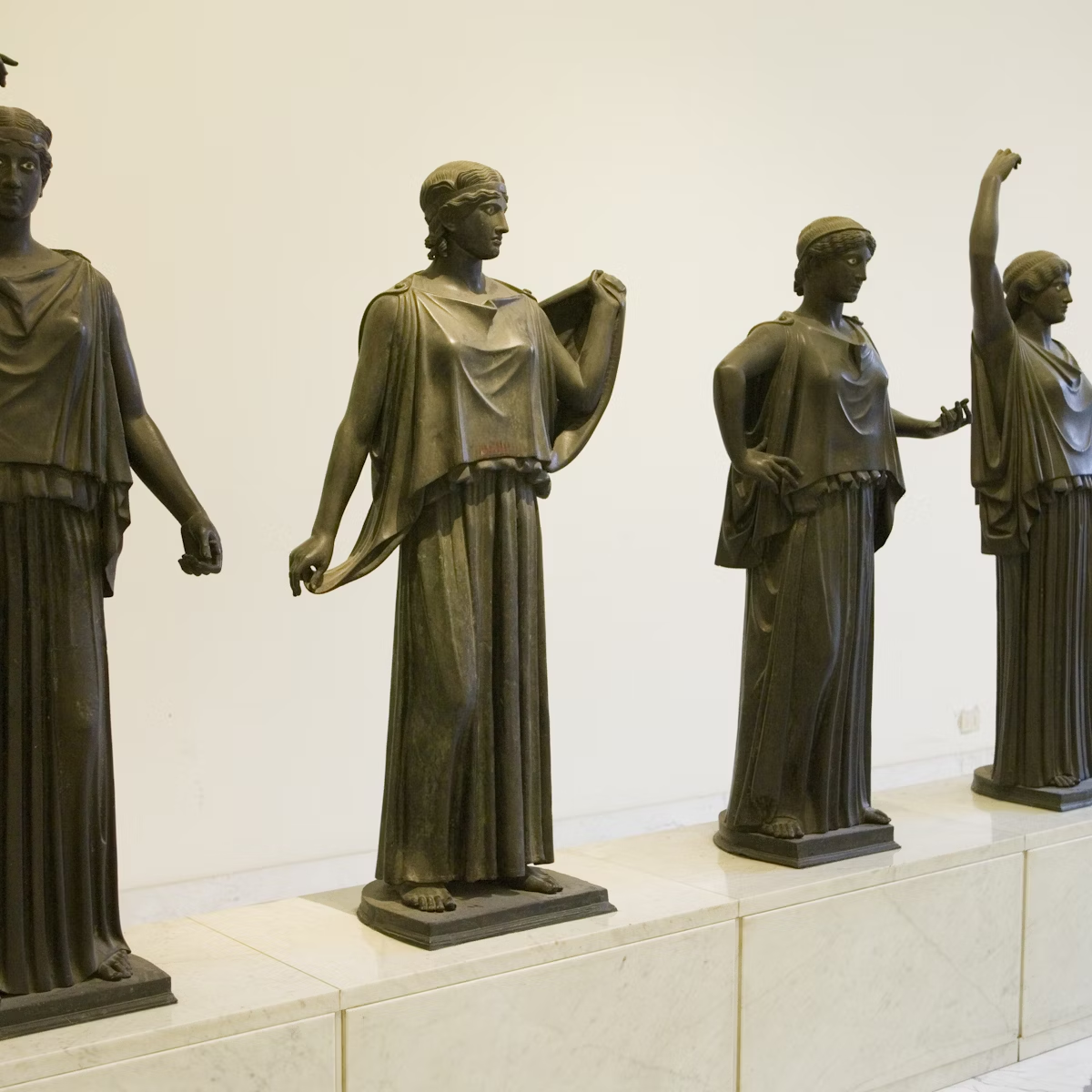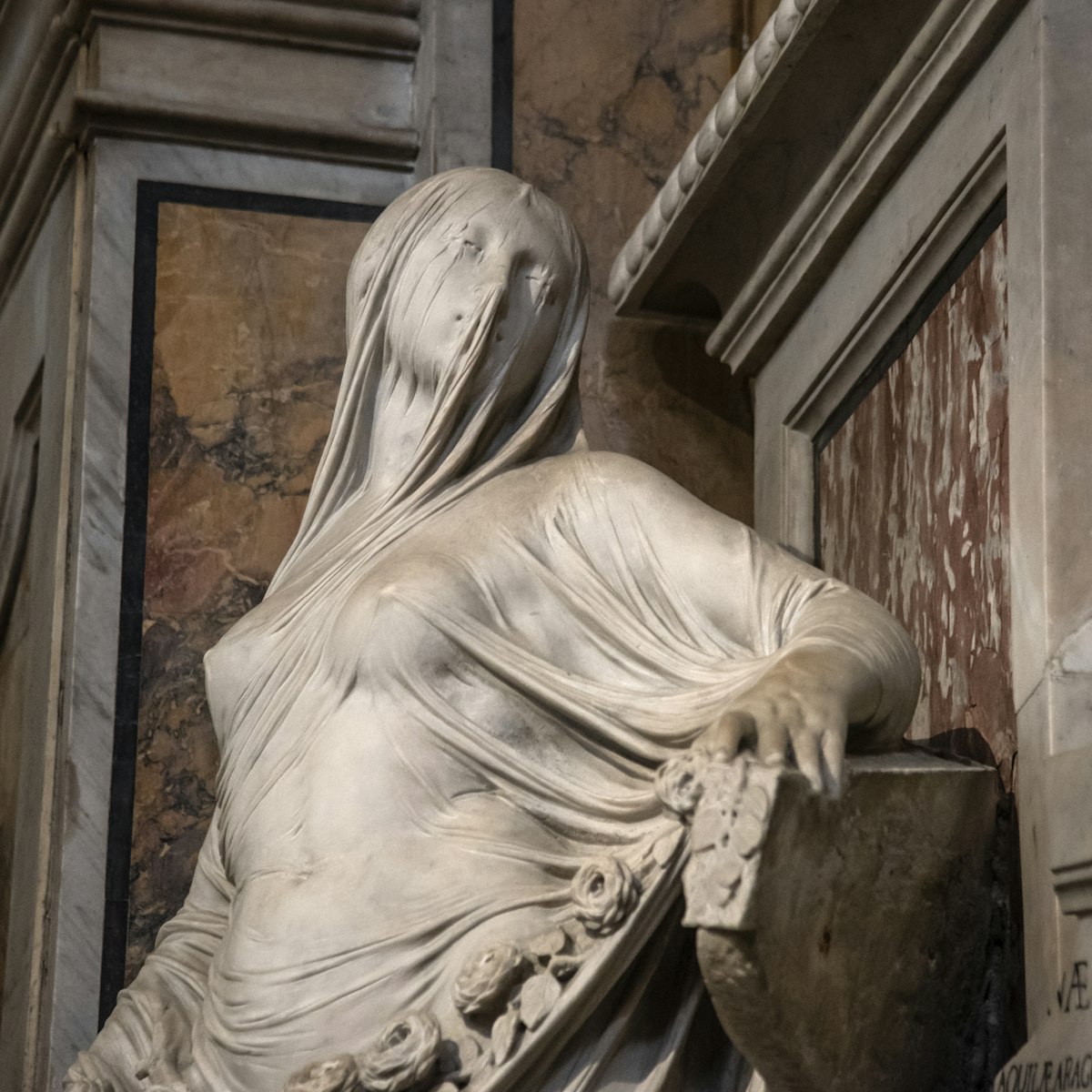Built in the 2nd-century BC in honour of Jupiter, Juno and Minerva, the Tempio di Giove was a nexus of religious activity. Its surviving elements include fluted columns and the two triumphal arches that flanked the temple. A large-scale sculpture of Jupiter's head found here can be viewed at the Museo Archeologico Nazionale in Naples.
Lonely Planet's must-see attractions

10.11 MILES
Once the very symbol of Amalfi’s power, Cattedrale di Sant’Andrea (also known as Duomo di Amalfi) is the town’s most iconic monument.

9.87 MILES
If you could bottle up a take-away image of the Amalfi, it might be the view from the Belvedere of Infinity, classical busts in the foreground, craggy…

14.2 MILES
Naples' National Archaeological Museum serves up one of the world’s finest collections of Graeco-Roman artefacts. Originally a cavalry barracks and later…

Certosa e Museo di San Martino
14.32 MILES
The high point (quite literally) of the Neapolitan baroque, this charterhouse-turned-museum was built as a Carthusian monastery between 1325 and 1368…

14.73 MILES
Naples' oldest and most sacred catacombs became a Christian pilgrimage site when San Gennaro's body was interred here in the 5th century. The carefully…

14.65 MILES
Originally designed as a hunting lodge for Charles VII of Bourbon, the monumental Palazzo di Capodimonte was begun in 1738 and took more than a century to…

27.28 MILES
There are castles and then there’s Ischia’s Castello Aragonese, a veritable fort-city set on its own craggy islet, looking like a cross between Harry…

13.85 MILES
It's in this Masonic-inspired baroque chapel that you'll find Giuseppe Sanmartino's incredible sculpture, Cristo velato (Veiled Christ), its marble veil…
Nearby Pompeii attractions
0.02 MILES
Dating from the 2nd century BC, the macellum was the city's main produce market. Note the 12 bases at the centre of the market, which were once stands for…
0.02 MILES
The Granai del Foro is now used to store hundreds of amphorae and a number of body casts that were made in the late 19th century by pouring plaster into…
0.03 MILES
A huge rectangle flanked by limestone columns, the foro was ancient Pompeii's main piazza, as well as the site of gladiatorial games before the Anfiteatro…
0.06 MILES
The oldest and most important of Pompeii's religious buildings, the Tempio di Apollo largely dates from the 2nd century BC, including the striking…
0.06 MILES
The 1st-century AD Casa del Poeta Tragico features the world's first-known 'beware of the dog' – cave canem – warnings. Visible through a protective glass…
0.08 MILES
The basilica was the 2nd-century-BC seat of Pompeii's law courts and exchange. The semicircular apses would later influence the design of early Christian…
0.09 MILES
Covering an entire insula (city block) and claiming two atria at its front end (humbler homes had one), Pompeii's largest private house is named after the…
0.1 MILES
On the right as you enter the ruin's main entrance is the 1st-century BC Tempio di Venere, formerly one of the town's most opulent temples.